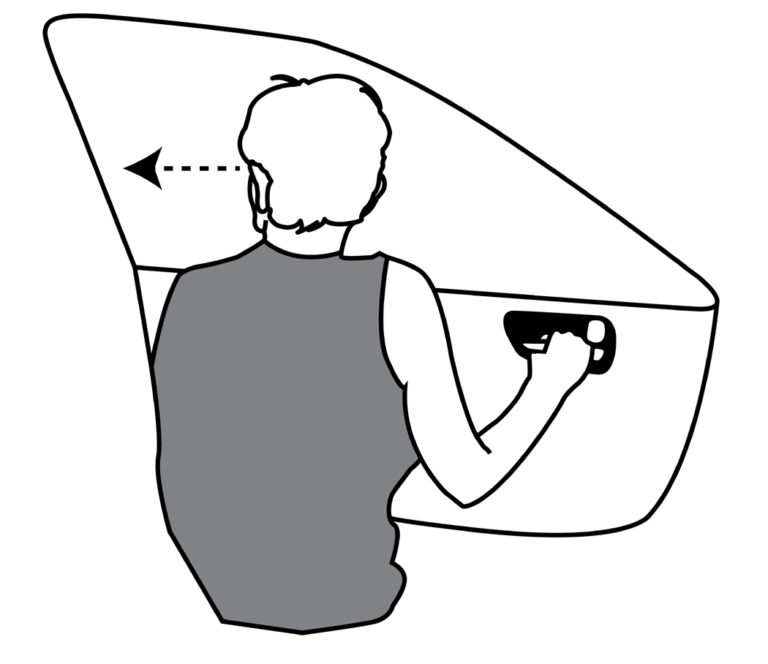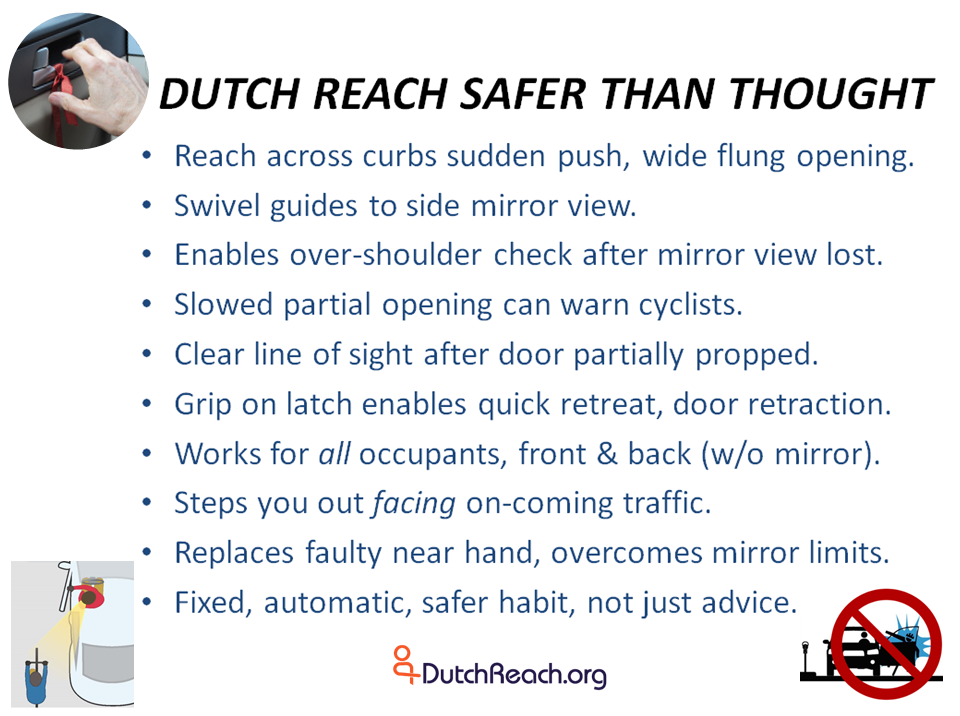In the lively town of Kidpur, there was a small school named Bigteacher Academy. The children at Bigteacher Academy loved to learn new things, especially when it came to safety. One day, their beloved teacher, Psyram, decided to share a fascinating story about a safety habit from a faraway land.
“Class, today I’m going to tell you about a special technique called the ‘Dutch Reach,’” Psyram announced, with eyes twinkling with excitement.
The children sat up straight, their curiosity piqued. “What’s the Dutch Reach, Psy?” asked Aarav, a curious boy sitting in the front row.
“It’s a wonderful habit taught to drivers in the Netherlands,” Psyram began. “When people in the Netherlands park their cars and are about to open the car door, they don’t use their left hand, which is closer to the door. Instead, they use their right hand. This simple action makes their bodies turn, so they can see if there’s a bicyclist coming from behind. It helps prevent accidents and keeps everyone safe.”

The children listened intently, fascinated by the story. “But why do they use their right hand, Psy?” asked Priya, a bright-eyed girl who loved to ride her bicycle.
“By using the right hand, the driver naturally looks over their shoulder,” Psyram explained. “This makes it easier to spot anyone who might be riding a bicycle or walking close to the car. It’s a small change that can make a big difference.”
Psyram then shared some stories from other countries where the Dutch Reach had made a big impact. “In Germany,” Psyram said, “a man named Hans used to be very careful about cyclists. One day, he heard about the Dutch Reach and decided to try it. Just a week later, while opening his car door, he noticed a cyclist speeding by. Because of the Dutch Reach, he saw the cyclist in time and avoided an accident. Hans was very thankful for this simple yet effective habit.”

The children’s eyes widened as they imagined how Hans might have felt. “That’s amazing, Psy!” exclaimed Rohan, a boy who dreamed of becoming a pilot. “Does it work in other places too?”
“Yes, Rohan,” Psyram nodded. “In some U.S. states like Massachusetts and Illinois, they have started teaching drivers the Dutch Reach too. There was a girl named Emily who lived in Illinois. One day, she remembered to use the Dutch Reach and noticed a group of schoolchildren walking past her car. She was so glad she didn’t open the door suddenly. Emily told her friends, and soon, everyone in her neighborhood started using the Dutch Reach.”
The children at Bigteacher Academy were inspired. “We should do that too!” said Anaya, a girl who always looked out for her friends. “It’s such a simple thing, but it can keep so many people safe.”
Psyram smiled warmly. “That’s the spirit, Anaya. Even though we don’t have as many bicycles on our roads as they do in the Netherlands, we still have many pedestrians, motorcyclists, and even animals that could get hurt if we’re not careful. By using the Dutch Reach, we can help make our streets safer for everyone.”
The next day, the children excitedly shared what they had learned with their families. Aarav demonstrated the Dutch Reach to his parents, showing how it made him turn and look behind. Priya taught her younger brother, who loved riding his tricycle, about the importance of being aware of his surroundings.
Soon, the entire community of Kidpur was talking about the Dutch Reach. It became a new habit for everyone who drove a car, and the town saw a noticeable decrease in accidents involving cyclists and pedestrians.
The children of Bigteacher Academy were proud of the difference they had made by learning and sharing the Dutch Reach. They realized that even small actions could have a big impact on their community, and they were eager to learn more ways to keep themselves and others safe.
https://www.rospa.com/policy/road-safety/advice/cyclists-and-motorcyclists/dutch-reach


